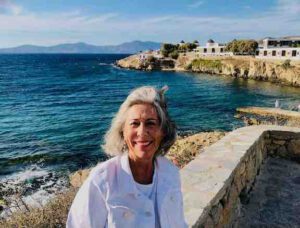Teresa Kostrubala
Biography Teresa Kostrubala was born in San Diego, CA. She received her B.A. in Clinical Psychology from United States International University (now Alliant University), and later received her M.A. in Psychology and her PhD in Clinical Psychology from the School of Human Behavior.
Teresa Kostrubala was born in San Diego, CA. She received her B.A. in Clinical Psychology from United States International University (now Alliant University), and later received her M.A. in Psychology and her PhD in Clinical Psychology from the School of Human Behavior.
Named Woman of the Year in 1977 for the State of California, she was a member of the San Diego Ballet Company and danced in the US and France. She later became a marathon runner, completing 20 marathons and many shorter races. She became certified as an IART Running Therapist and was the first person to do research on the personality type of female marathon runners. Her research was published in the New York Academy of Sciences.
She has worked in the North Carolina and Florida school systems as a Counselor for elementary grades as well as high school, and has done private practice in Running Therapy.
After an illness she started a second career in the art world and had her own working gallery on Sanibel Island in Florida. She has done logos for fly fishing companies and has donated her art for the Abused Women fundraiser, the Heart Association, Cancer Research, and the Children’s Hospital.
Her artwork was critiqued by John Mendelsohn, who has written reviews and articles for ArtNet Magazine, Internet magazine and The Jewish Week. He lives and works in New York City. Here is what he had to say:
Teresa Kostrubala’s painted world is a candy-colored paradise. In this peaceable kingdom, visual pleasure reigns, uninterrupted by inclement weather or bad behavior. In this realm, the artist’s imagination creates happy variations on the theme of nature’s impulse to ornament and to delight.
The setting of Kostrubala’s beaches, and the fantastic fish and flora, which inhabit its environs, is undeniably tropical. A glowing sun is either present or just offstage, brightly illuminating the scene. Nature is in full-flower, palm trees bear multi-colored coconuts, and fish burble in loving communion.
While seemingly child-like in its simplicity, Kostrubala’s world is full of sophisticated abstract invention. The artist takes observed nature as her inspiration and goes on to conjure new species of organic life. Fish turn into dazzling fashion plates, and blossoms in a vase become modernist jewels.
Kostrubala’s favored colors are high key magenta, emerald, turquoise, and yellow. They are hues of the tropics, gathered and distilled into a refreshing tonic. In this world, the human presence, if there, is quite minimal. The hat, but not the face it covers might be seen. Nonetheless, the settings are human-scaled and inviting.
Teresa Kostrubala has a real feeling for the curving arabesques of fins and feathers. She used nature’s repeating, decorative patterns of stripes, dots, and radiating forms. And she builds up concentrations of color upon color until they vibrate. The total effect is generous and celebratory. One is left with the impression that while this place can be found in no guide book, it does exist before us with vivid convincing clarity.